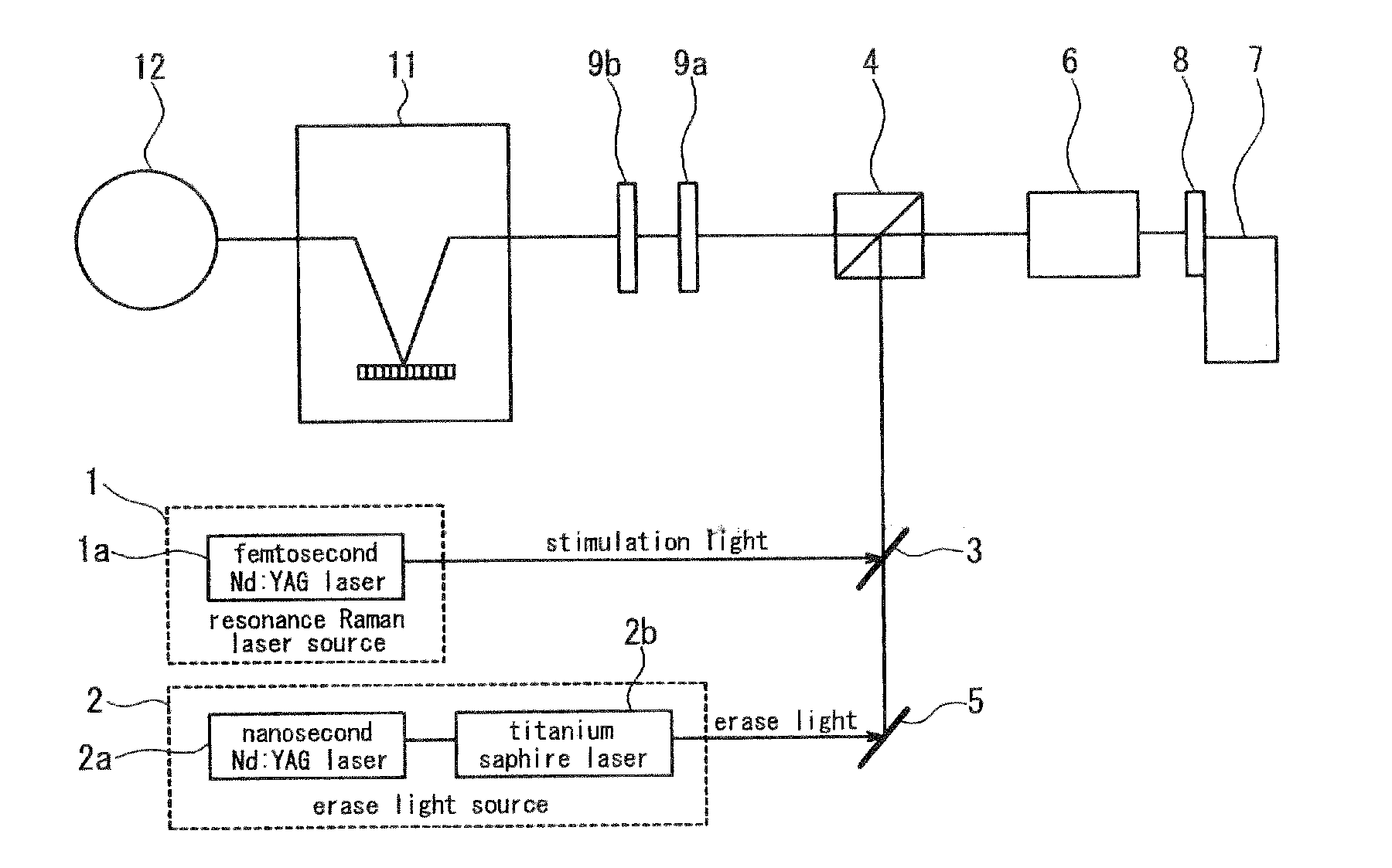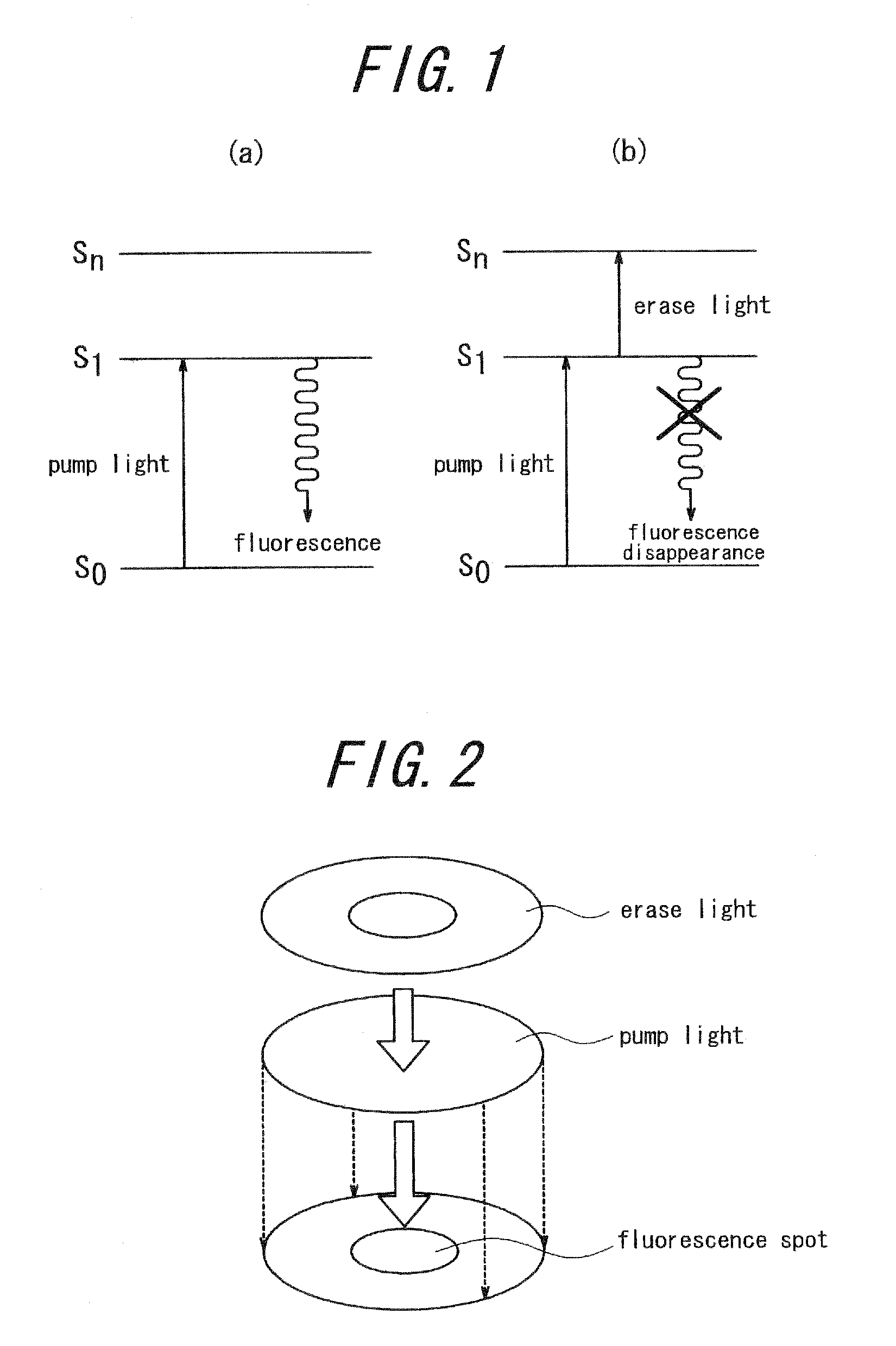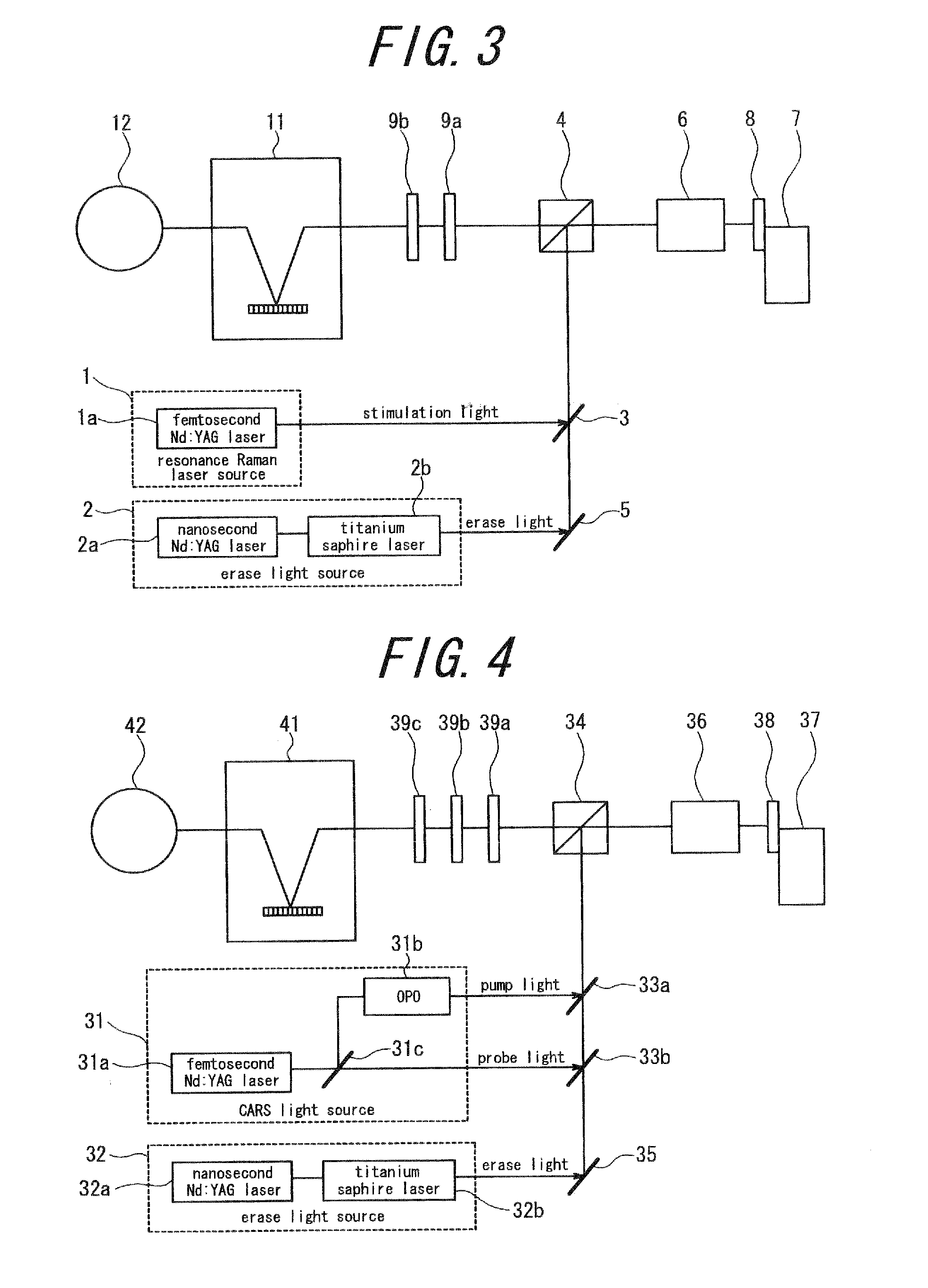Optical microscope
a microscope and optical technology, applied in the field of optical microscopes, can solve the problems of inability to use conventional fluorescent microscopes, inability to respond to fluorescence, etc., and achieve the effect of good s/n ratio
- Summary
- Abstract
- Description
- Claims
- Application Information
AI Technical Summary
Benefits of technology
Problems solved by technology
Method used
Image
Examples
first embodiment
[0098]A microscope according to the first embodiment of the present invention visualizes a biological molecule by using resonance Raman scattering. The Biological sample includes, for example, nucleobase such as tryptophan, tyrosine, phenylalanine and adenine. Such nucleobase, which is an important molecule to analyze living structure and activity thereof, includes a benzene ring and a nitrogen base and has a S0 →S1 absorption band by extremely strong electronic transition in a wavelength band around 260 nm. Thus, if these molecules are exited by fourth-harmonic wave of Nd:YAG laser light (wavelength 266 nm) as Raman process-inducing stimulation light, Raman band can be made to appear in a wavelength band of 290 nm to 400 nm.
[0099]However, the above-mentioned molecules have a strong fluorescence band around the wavelength of 360 nm. Therefore, in conventional resonance Raman scattering microscopy using only Raman process-inducing stimulation light, a fluorescence band becomes a back...
second embodiment
[0107]Environmentally responsive fluoroprobe of a biological sample is observed with a microscope according to a second embodiment of the present invention, by utilizing coherent Raman scattering. In a coherent Raman microscope, staining a biological sample is not generally required because resonance oscillation of a molecule is converted to signals. However, when environmentally responsive fluoroprobe is observed with a conventional coherent Raman microscope, a two-photon absorption process and the like may follow and there is a possibility that a Raman signal is buried among fluorescence signals and cannot be detected.
[0108]By the way, when an environmentally responsive fluoroprobe takes in or absorbs a particular molecule, atom or ion, it greatly increases a fluorescence yield and emits intense fluorescence. Further, a fluorescence yield greatly varies depending on ambient temperature and pressure so that the environmentally responsive fluoroprobe is either fluorescent or non-flu...
third embodiment
[0120]A sample stained by a fluorescent dye in a two-photon absorption process is observed with a microscope according to a third embodiment of the present invention. FIG. 5 is a schematic block diagram of a main part of a two-photon microscope according to the present embodiment. This two-photon microscope has a two-photon excitation light source 51 which is a stimulation light source and an erase light source 52. The two-photon excitation light source 51 uses, for example, a titanium sapphire pulsed laser of mode lock type and generates, from the titanium sapphire pulsed laser, pulsed light having relatively high peak power and a pulse width of not more than 10 picoseconds in a relatively wide wavelength range from 900 nm (near-infrared) to 700 nm as pump light (stimulation light). The pump light of this wavelength range excites fluorescent dye having rhodamine, fluoroscein and the like in the molecular skeleton thereof to make the dye generate fluorescence.
[0121]The erase light s...
PUM
 Login to View More
Login to View More Abstract
Description
Claims
Application Information
 Login to View More
Login to View More - R&D
- Intellectual Property
- Life Sciences
- Materials
- Tech Scout
- Unparalleled Data Quality
- Higher Quality Content
- 60% Fewer Hallucinations
Browse by: Latest US Patents, China's latest patents, Technical Efficacy Thesaurus, Application Domain, Technology Topic, Popular Technical Reports.
© 2025 PatSnap. All rights reserved.Legal|Privacy policy|Modern Slavery Act Transparency Statement|Sitemap|About US| Contact US: help@patsnap.com



